Rubella is a disease that can be passed from person to person through the respiratory tract, more dangerous, this virus can spread from pregnant mother to fetus. Therefore, to limit the risk of disease, it is important to get tested for rubella, especially during pregnancy, to ensure the healthy and safe development of the fetus in the womb.
What is Rubella?
What is Rubella? Rubella is a non-dangerous infectious disease that causes benign typhus fever on the patient's body. However, during pregnancy, if the pregnant mother is infected with the rubella virus, there is a risk of transmitting it to the fetus through the bloodstream, leading to fetal defects.
For pregnant women, Rubella is seen as a dangerous threat to the healthy development of the baby in the womb.
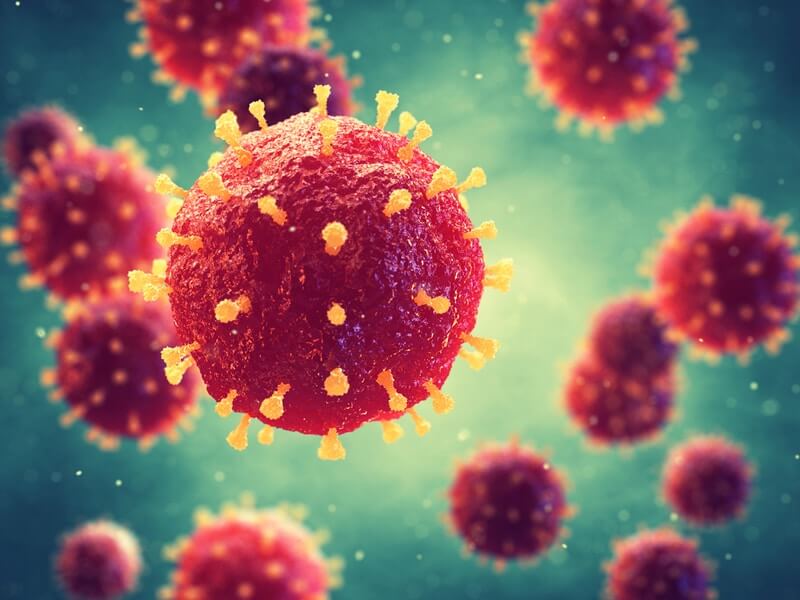
In the case of a pregnant woman infected with the Rubella virus in the first trimester of pregnancy, the mother's risk of passing the virus to her fetus is very high, up to 90%. When the fetus is infected with the Rubella virus it is possible to have congenital rubella syndrome, even cause death in the womb.
Therefore, during pregnancy, the Rubella test is extremely necessary, has an important meaning in protecting the health of mother and baby.
For young children, as recommended by the Ministry of Health, to minimize the risk of disease in young children, parents need to pay attention to fully vaccinated children.
How Does Rubella Spread?
Rubella can happen at any point in time. However, it is most common in winter and spring, which can also be scattered all year round.
According to statistics, Rubella disease may not cause symptoms, causing patients not to know they are having Rubella, this case accounts for about 20-25% of the total cases.
Rubella spreads from a person who carries the virus to a healthy person, about 7 weeks before and after the rash occurs.
When a healthy person touches or inhales an infected person's respiratory secretions, they can become infected with the virus. Pregnant women who do not have immunity also have a very high risk of disease.

Rubella virus is not only transmitted from mother to child during pregnancy but also rubella disease in children can also occur when a baby comes in contact with an infected person's nasopharyngeal fluid. Because children have weak resistance, they are one of the most susceptible to this virus.
How Can I Check My Rubella Status?
After infection with Rubella, signs showing the existence of Rubella virus in the patient's body usually appear in the period from 14 to 22 days from the date of infection.
The symptom of rubella is usually a red rash on the face that spreads throughout the body but is usually not as sequential as having measles. You will not be able to float on the palms of your hands or feet.
The rash is characteristic of pink, may also be reddish, round, or oval with small sizes of 1-2mm, accompanied by an itchy sensation. After about 3-5 days, the rash will disappear and leave a dark nodule on the skin.
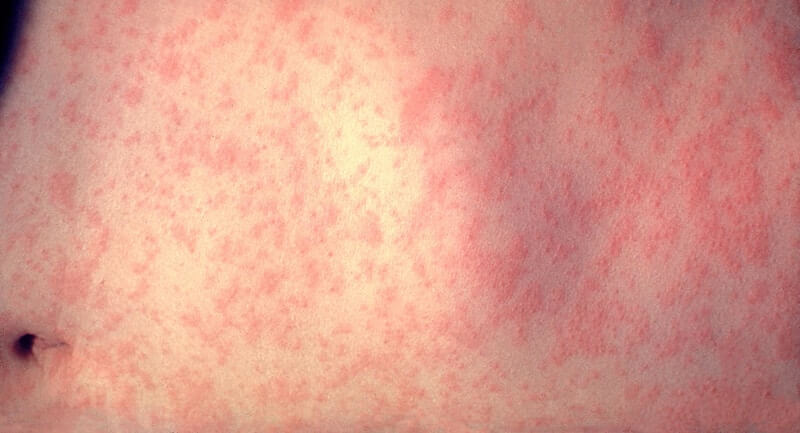
In addition, the disease has symptoms similar to the flu with common symptoms such as:
Fever: The patient may have a mild fever, about 38 degrees Celsius, accompanied by fatigue, headache, sore throat, and runny nose for 1 – 4 days. Once the rash is over, the fever will subside.
Lymphadenopathy: This is a condition that usually occurs before the rash occurs in the occipital area, groin, neck, painful sensation and lasts for a few days when the rash clears.
In addition, the patient may suffer from conjunctivitis and joint pain.
In nearly 50% of cases, the patient does not have typical clinical manifestations, leading to the common mistake of rubella symptoms for other diseases.
What Are Rubella IgG And Rubella IgM?
Currently, the diagnosis of Rubella will be based on the results of the quantitative immunoassay of Rubella IgM and IgG by a doctor.
Using the Rubella test will help detect antibodies in the blood, produced by the body's immune system in response to an infection caused by the Rubella virus. In which, IgM and IgG are two types of Rubella antibodies.
After a period of exposure to the Rubella virus, Rubella IgM antibodies will appear in the blood of the patient. Within 7 – 10 days after infection, protein levels rise rapidly, reaching a peak lasting several weeks and then gradually decreasing.
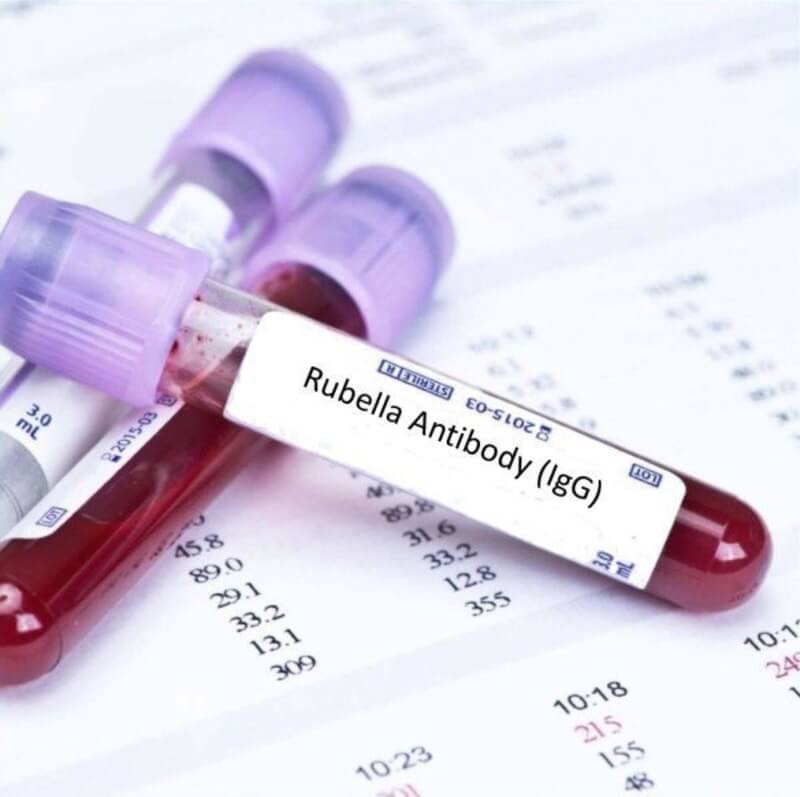
In the case of pregnant women infected with the Rubella virus, IgG antibodies in the body will appear. The IgG antibody will appear later than the IgM antibody. However, it stays in the blood for life, taking on the role of helping the mother's body fight the infection caused by the Rubella virus.
The presence of IgM antibodies in the blood means the presence of infection. A recent or past infection with the Rubella virus will be indicated if IgG antibodies are present.
For congenital rubella syndrome, after birth, babies have a high risk of deafness, developmental delay, etc. Therefore, during pregnancy, the Rubella antibody test should be done regularly according to the instructions of the doctor. to ensure immunity against disease.
Rubella Test In Pregnant Women
Rubella test subjects (IgM and IgG) are pregnant women who have never been vaccinated against Rubella and have never had Rubella disease in the pre-pregnancy period.
The ideal time for a Rubella test is between 7 and 10 weeks of pregnancy. This test should not be done by pregnant women until 16 weeks or more of the fetus, as it is difficult to interpret the results, and if abnormal problems occur, it is also difficult to resolve because the baby is grown up.
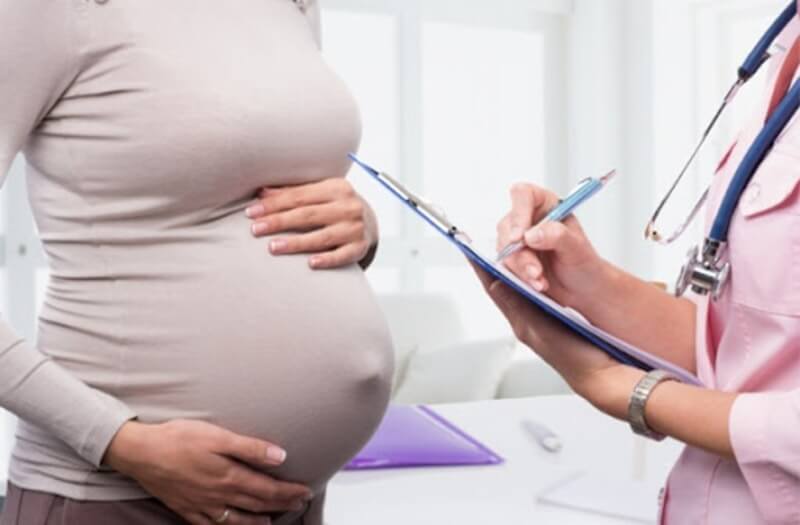
How to read rubella test results like? What does a positive and negative Rubella igg index mean? This is a great question of many people, wanting to better understand the results as well as their health status.
Regarding Rubella test results, you need to be concerned about IgM and IgG scores with two positive and negative results as follows:
1. What does Rubella IgG positive and IgM negative mean?
If you read a negative result of IgM but IgG is positive, this means that you have been infected with the Rubella virus before the test for at least 10 weeks and your body has antibodies. IgG protection.
If the IgG level rises after the 2-week test, it also means that you have previously been infected with the Rubella virus or have been vaccinated.
But results show that if the IgG level is low, you may have Rubella, and in this case, it is necessary to have a Rubella IgM and IgG test done after 1 week. During this test, a positive IgM result and an elevated IgG indicate you have acute Rubella disease.
2. What does Rubella IgM positive and IgG negative mean?
If the Rubella test results are positive for IgM and IgG negative, it means that the patient has only recently been infected with the Rubella virus, so only IgM antibodies can respond.
In this case, the doctor may prescribe the patient to be tested for IgM and IgG after 2 weeks to confirm again.
On the second time, if the results show that IgM continues to be positive and IgG has begun to appear, it can be confirmed that the woman has been infected with the Rubella virus.
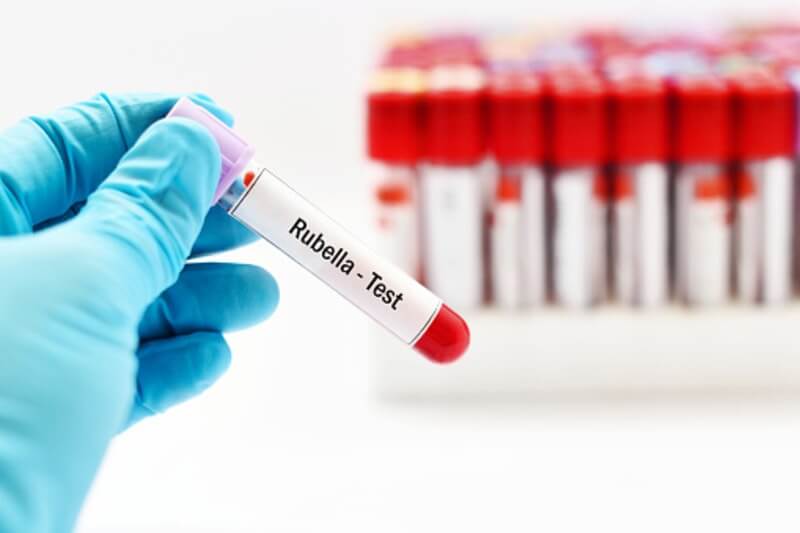
But if the IgM result is positive and the IgG is negative like 1st, then the IgM result is nonspecific. If a woman is less than 12 weeks pregnant but has a positive IgM, it is very likely that the pregnancy will be infected with the rubella virus or not. According to studies, the risk of transmission of the Rubella virus during this period accounts for up to 80%.
Not only that, if the fetus is infected with the Rubella virus during this period, it will increase the risk of giving birth to a very high congenital rubella syndrome.
3. What does Rubella IgM positive and IgG positive mean?
Results of IgM positive, IgG positive in fact are very rare. It is more likely that this result is a false positive, possibly because a woman has recently been infected with a virus.
In this case, to confirm the results, the pregnant woman will be monitored and repeated IgM and IgG tests in the next 2-3 weeks. If the results of IgM and IgG are still positive, the pregnant woman can be assured of her condition.
4. What does Rubella IgM negative and IgG negative mean?
If the test results for IgM and IgG are negative, it is possible that the pregnant woman has never been infected with the Rubella virus in the past, but is at risk of rubella.
Therefore, during this time, pregnant women need to pay attention, regularly monitor their health status, recognize early signs and handle if infected with Rubella.
This result may also fall in the case of pregnant women infected with the Rubella virus but still in the incubation period, so IgM and IgG antibodies have not been produced and have a negative result.
Therefore, doctors will usually advise patients to resume the Rubella test over the next 2-3 weeks.
Hopefully, this article has helped you better understand what the rubella test is done, understand how accurate test results are. Accordingly, to prevent rubella effectively, you should get rubella vaccination before planning to become pregnant to protect the health of both mother and baby in the future.
If you need more information related to the Rubella test as well as make an appointment, you can call hotline 19001717 – Diag for the most detailed answers.
Please find the nearby location or the nearest branch your home to visit for tests and get quick online results. For more detailed information about our test menu and price list, click here.
The site cannot and does not contain medical advice. The medical information is provided for general informational and educational purposes only and is not a substitute for professional advice. Accordingly, before taking any actions based upon such information. We encourage you to consult with the appropriate professionals.

 1900 1717
1900 1717 